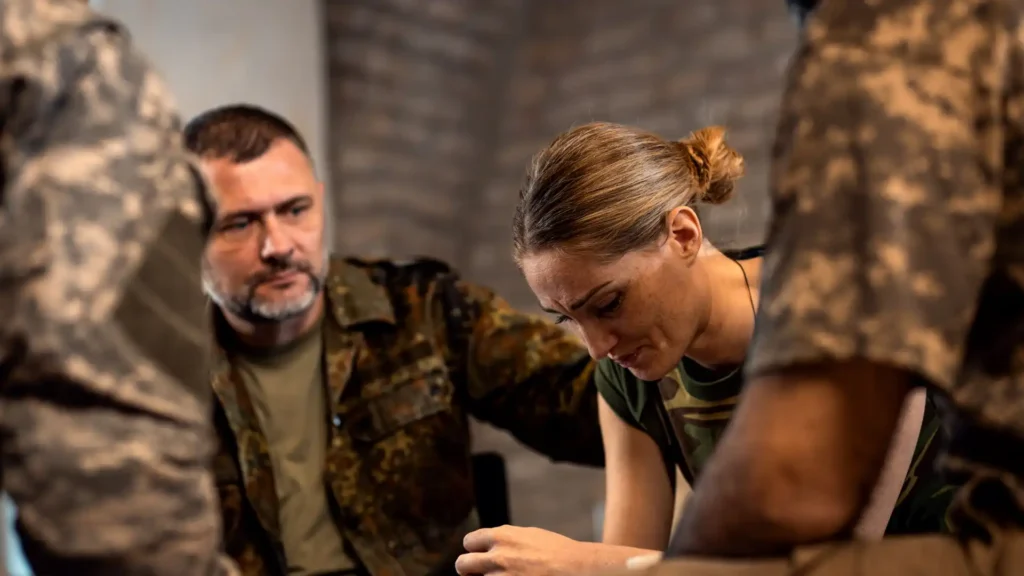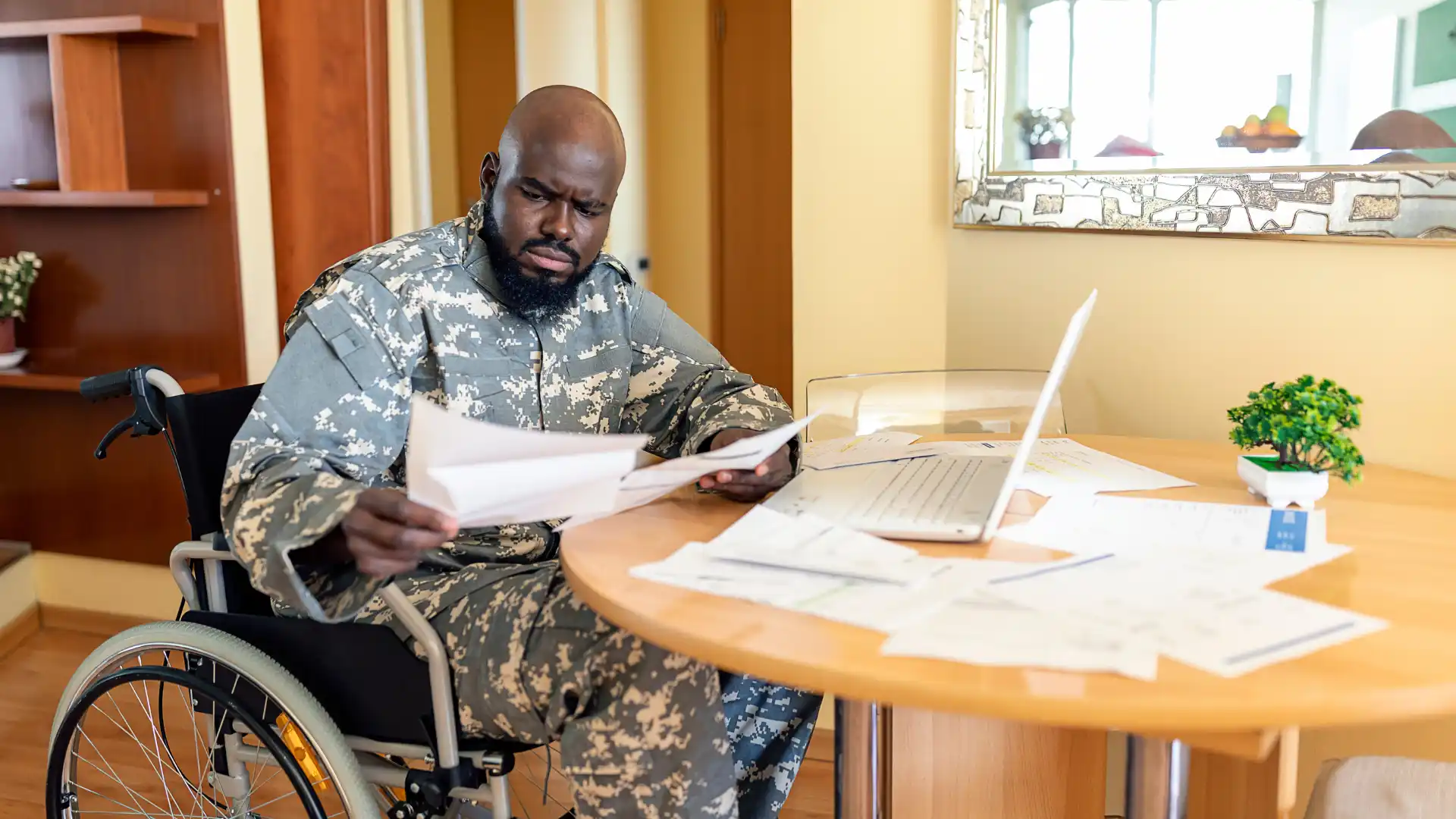If you have been diagnosed with hypertension or high blood pressure due to your time in the service, you may be eligible for VA disability benefits. The VA will pay disability benefits according to the degree of your disabling condition. The VA uses percentage ratings to gauge disability from hypertension. If you plan to apply for disability, you need to understand VA disability ratings for hypertension and how they affect your compensation.
Is Hypertension a VA-Recognized Disability?
Yes, hypertension is a VA-recognized disability for which you can receive benefits. Hypertension is a medical condition characterized by abnormally high blood pressure. Hypertension puts stress on the arteries and can lead to a wide range of adverse health outcomes, such as heart disease. Veterans are more likely to develop hypertension than civilians due to a combination of reasons, ranging from deployment stress and combat trauma to physical injury.
Hypertension is deadly because it may not cause any noticeable symptoms. It is not uncommon for someone to have hypertension for years and not know it until they develop a heart condition. Symptoms typically only present in the advanced stages of the disease and may include:
- Headaches
- Chest pain
- Nosebleeds
- Heart palpitations
- Difficulty breathing
- Abdomen pain
- Blurred vision
- Lethargy and tiredness
- Dizziness
How to Qualify for a Hypertension VA Rating
VA disability ratings for hypertension are found in 38 CFR 4.104. Like other disability ratings the VA uses, hypertension ratings are percentages. The VA rates hypertension between 10 percent and 60 percent, with breaks at 20 percent and 40 percent. Each rating is based on your measured diastolic and systolic blood pressure. Diastolic pressure is the lower number on a blood pressure gauge, which measures arterial blood pressure when the heart is at rest between beats. Systolic pressure is the top number and measures pressure during heartbeats.
- 60 percent – Diastolic pressure of 130 or more
- 40 percent – Diastolic pressure of 120 or more
- 20 percent – Diastolic pressure of 110, or systolic pressure of 200
- 10 percent – Diastolic pressure greater than 100, or systolic pressure greater than 160, or diastolic pressure greater than 100 and requiring medication for control
Measurements must be taken at least twice on three or more days to count for a rating. This measurement rule prevents assigning ratings for measurements that are atypical and not representative of the norm.
Direct Service Connection for Hypertension
To receive disability benefits, you must have a diagnosis of hypertension and prove that your time in the military caused or aggravated your condition. There are a few different ways you can establish this kind of service connection for your hypertension.
If you received your diagnosis while on active duty in the military, you can claim a direct service connection. To prove a direct service connection, you will need to provide copies of medical records that prove your hypertension started while on active duty. You can also claim a direct connection if you had hypertension before joining the military, but it got worse after joining.
Secondary Service Connection for Hypertension
In many cases, hypertension may not be a direct result of military service, but can arise from other service-connected disabilities, such as:
- PTSD
- Chemical exposure (e.g., Agent Orange)
- Medication side effects
- Kidney disease
- Metabolic syndromes
For example, the mental and physical stress of PTSD is associated with high systolic blood pressure and cardiovascular risk. If another service-connected disability caused your high blood pressure, you can claim a secondary service connection for hypertension. You will need to provide medical evidence that links the two conditions together.
Presumptive Service Connection and Hypertension
Hypertension is included on the VA’s presumptive service connection list. This means that if you receive a hypertension diagnosis within a certain time after discharge, the VA will automatically presume your condition is service-connected. With a presumptive service connection, you do not have to prove that a specific event during service caused or aggravated your condition.
The typical eligibility period for chronic diseases like hypertension is one year. So, say you are discharged from the military on January 1st, 2026, and receive a diagnosis of hypertension on September 1st, 2026. In this case, your hypertension will have a presumptive service connection because you received a diagnosis within a year of active-duty discharge. You won’t have to directly prove that your service caused it.
VA C&P Exam for Hypertension
 When you apply for hypertension disability benefits, the VA may schedule a medical exam to assign your disability ratings. During this compensation and pension (C&P) exam, a VA physician will review your medical records/evidence, take measurements, ask about your medical history, and gauge any physical or cognitive limitations. The physician may use a VA disability benefits questionnaire (DBQ) to gather and assess your medical information. Below are some tips to help streamline the C&P exam process.
When you apply for hypertension disability benefits, the VA may schedule a medical exam to assign your disability ratings. During this compensation and pension (C&P) exam, a VA physician will review your medical records/evidence, take measurements, ask about your medical history, and gauge any physical or cognitive limitations. The physician may use a VA disability benefits questionnaire (DBQ) to gather and assess your medical information. Below are some tips to help streamline the C&P exam process.
- Bring copies of all your medical records and documentation related to your hypertension. The more documentation, the more support for your claim, and the less likely the VA will request more information.
- Consider preparing a symptom diary. A personal diary can illuminate your daily struggles and explain how your hypertension affects your functioning.
- Elaborate on your symptoms and difficulties when asked. Don’t reply just yes and no — give context to answer, and describe how your condition affects your life and work.
- Explain how you have variations in your symptoms that make some days better and others worse.
- Don’t try to exaggerate your symptoms to get a higher rating. Lying during the VA disability process can render you ineligible for benefits entirely and even result in criminal charges.
Depending on your circumstances, the VA may schedule a follow-up review exam to see if your condition worsens. Not everyone is required to take a C&P exam. If you submit enough evidence with your application, the VA can make a decision without scheduling an exam.
VetLaw Can File Your VA Disability Application for You
If you have any more questions about VA disability ratings for hypertension, contact VetLaw at (336) 355-8387. You can schedule a free consultation with one of our VA disability benefits lawyers to discuss your case.







